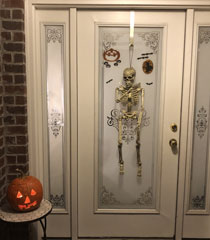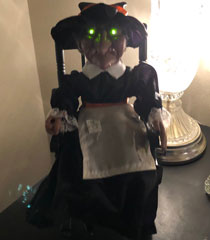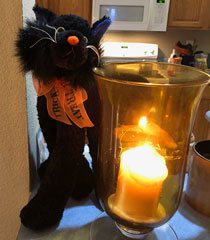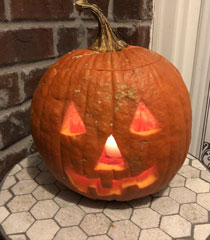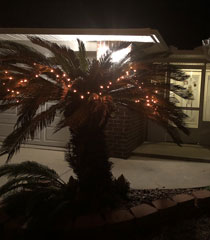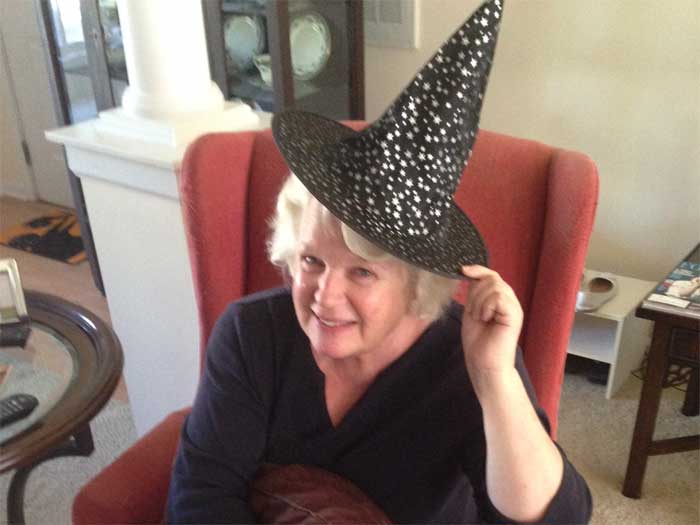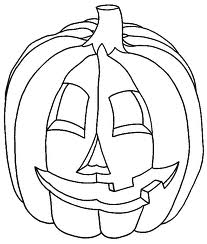 |
The Skarry Skelly 2019 Halloween Message |
|
Hey kids! What are Kevin McCallister's feelings about celebrating Halloween in a tropical climate? |
W
ell, President Trump's anti-adhesive veneer shows signs of wearing thin. Took long enough. Astonishingly, one area where Americans still give him top marks is in handling the economy. Jeez, it's just a good thing the guy's not a school bus driver. The tariff wars have been a disaster. Employment growth is slowing in the heartland and in manufacturing and retail. The deficit is back near a trillion dollars, a height last scaled in the 2008 derivatives meltdown. Remember that? When George Bush's approval rating sank to the mid 30s? How can one build such a huge deficit in the tail wind of steady economic growth? Maybe if you just give money away to the rich. Anyway, people still haven't caught on completely to Trump. That finance is just one more aspect of governance where he has little real knowledge and little real interest. 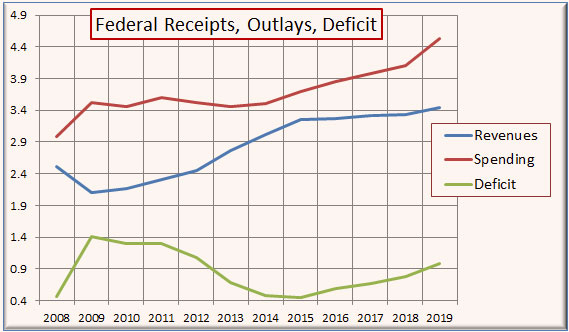
Whatever became of fiscal conservatism, deficit hawks et al? Suddenly scaredy cat got their tongues?
There's talk of a recession. Like Bill Murray's blizzard in "Groundhog Day," it may push off to the east and all we'll get is a few flurries, but as Bill Murray found out, you never know. There's still sufficient feel-good economic news around. GDP is still growing, even if much slower than the president might think (1.9% in the 3rd qtr.). Unemployment is at 3.5%. Wages are—or were—growing at their fastest rate in a decade. And Trump never shies away from taking full-throated personal credit for all of this. But it's just as true to say that wages are where they were 45 years ago or that wages are at a 60-year low. All three claims about wages could be correct, depending on what measure is used to justify it. (See Factcheck.org: Are Wages Rising or Flat?) And it's also true that driving a truck is the most common job in 29 out of 50 states. Statistics, the third class of lie. Industrial production—a gauge of U.S. factory output at mines, utilities and manufacturing companies—fell 0.4% in September. It would be hard to lay all the blame for that, or any of the above, on this president. Now comprising roughly 12% of GDP, manufacturing has been shrinking for decades, the result of globalization, automation and the rise of low-wage third-world manufacturing centers (not just China). Manufacturing sector employment has also been steadily shrinking. Less than 10% of Americans are employed in manufacturing, versus 25% in the early 1970s. Mining? Fuggetaboutit. But who cares, really, about job losses or wage losses in this family just now. We've had our own loss. And recovery, what there is of it to be had, seems far off. Miss you, Sugarpuss. Most people right now can't conceive much of any distress but their own. And they won't until it becomes crystal clear to them. Which is to say right on top of them. So at least there's nothing on the near horizon to disrupt the traditional slide into the Halloween partying that signals the advent of the cold weather holidays, thls opening kick-off of fall frivolity that adults seem to have stolen away from their kiddies.
See you in the bars, guys. And even if we shouldn't meet up, have yourselves a Happy Halloween whomever you're with. Your mother would have wanted it that way. Love, |
 websitesammy home page |
|
‘Scottish Singles Used to Spend Halloween Picking Kale
The leafy green once foretold the future. Oct 23, 2018
By Mark Hay, Atlas Obscura ON THE EVE OF HALLOWEEN, the old lore goes, the veil between worlds grows thin. Spirits walk the earth; magical forces are particularly potent. And to mark and make the most of this spooky-special time of year, Scottish youths sneak onto local farms or into their neighbors’ gardens at midnight, blindfold each other, pull stalks of kale from the ground, then read them, analyzing their length and girth, the quality of their cores and taste, and the amount of dirt caked onto them, to divine what kind of partner they’ll marry. Or at least many did until around the early 1900s.
This was just one of several magical, kale-based Halloween rituals practiced across the British Isles. According to folklorists, some individuals hung kale over their door overnight, then placed it under their pillow the next to prompt prophetic dreams. Children who wanted a sibling could place a stalk of kale outside their parents’ door to nudge a sibling into being. Irish families in particular stuck charms into the colcannon, a potato, cabbage, kale, and onion mash they served on Halloween. Whoever found a ring charm would marry within the year, while whoever found a thimble charm would be a spinster. A woman could also scoop the first and last spoonful into a stocking and hang it over her door—the first man to walk beneath it the following day was destined to be her husband. The nature and popularity of kale-based rituals likely varied over time and space, notes Celtic studies professor and folklorist Juliette Wood. Regardless, it seems clear that until relatively recently, at least in this one corner of the world, kale was not so much a superfood, as it has been branded in the United States, but an occasionally supernatural food. No one is sure when people in the Isles started using kale for Halloween divination games. Popular accounts describe these rituals as ancient Celtic practices, but Wood argues this idea doesn’t hold water. For starters, academics have long accepted that there never was a cohesive, enduring Celtic identity or set of rituals and that we don’t know much about ancient regional rituals. More practically, most historians hold that kale did not spread to the British Isles, or become part of regional diets, until the Middle Ages. The first clear evidence of blindfolded midnight kale picking in Scotland seems to crop up in a 1769 travelogue. The ritual also features prominently in Scottish literary hero Robert Burns’s 1785 poem “Hallowe’en,” an extensively researched and notated work that drew on older poems and firsthand accounts of festivities. From there, it pops up frequently in regional folklore collections. “If it was already established … by the end of the 18th century,” says Peter Maxwell-Stuart, an expert on early modern European magical practices, “it is a reasonable inference that it was older,” albeit by an unclear margin. We do have a good idea as to why people practiced kale-based divination on Halloween. As the Halloween historian Lesley Bannatyne points out, from the time Irish monks, almost 1,000 years ago, started writing about the festivals that later served as inspirations for Halloween, they consistently noted that they were a time for divination. (Woods adds that similar rituals occur across cultures, and during other transitional times of year, too.) Regional divination practices didn’t require anything fancy or specific, explains Julian Goodare, a historian of folk beliefs at the University of Edinburgh, just something accessible that would yield a truly random, hard to manipulate reading. |
Scottish newspapers talked about people in Halloween parades wielding kale stalks topped with candles as torches. Kale fit that bill. A uniquely hearty crop, it and its cousin cabbage were two of the few crops even the poorest residents of Ireland, Scotland, and Wales could reliably grow. In Scotland, kale was so ubiquitous that home gardens are still often called kaleyards. “Even the bells of St. Giles Cathedral in Edinburgh tolling at 2 p.m. were known as the kail bell,” says food historian Christopher Trotter, “as they called workers without watches in for their midday meal.” Halloween falls right in the traditional cabbage and kale harvest season.
The same logic also explains a host of other Halloween divination traditions based on common foods, such as cracking egg whites into water or dropping apple peels onto the ground (to supposedly form your hidden beloved’s initials). Most historians believe Halloween divination games were less about serious magical beliefs and more about fun and matchmaking. Much like how bobbing for apples used to be about getting potential suitors up close and personal, you might guide a blindfolded friend to the perfect stalk of kale, or twist the reading, to match the stalk to someone you wanted to set them up with. Kale divination survived into the 20th century, crossing the ocean with immigrants and appearing in American guides to celebrating Halloween. In the early 1900s, though, cultural makers and shakers sought to make Halloween a systematized and respectable Victorian tradition. Divination and the potential for teenage necking baked into them fell out of fashion in favor of family-friendly community parties and other old traditions, such as costumed mumming for food. Gradually, Halloween became a children’s holiday, focused on juvenile pranks and, eventually, candy. Halloween was left, incidentally, loveless and kale-less. Of course, between our modern-day obsessions with kale and with reviving pre-modern rituals, it might seem as if there’s space for a kale divination revival. “I’ve heard of a few uses in retro Halloween parties,” says Halloween historian Lisa Morton. But since so few people have kale farms or gardens, the modern version might not be much fun. “I don’t think the urge to peer into the future will ever leave us,” says Bannatyne. But “maybe kale has seen its day as the vehicle [for that sort of amorous prognostication] come and go.”
|
